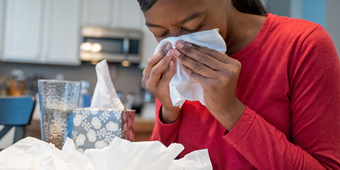Asthma: Who’s at Risk?

Answer a few questions and we'll provide you with a list of primary care providers that best fit your needs.
You probably know more than one person who has asthma, because the number of people with asthma in the U.S. is a whopping 22 million, including 6 million children. Which groups are more likely to be born with or develop asthma?
Adult women are more likely to have asthma than adult men. (It’s the opposite in childhood).
Children at Risk
Asthma is the most common chronic disease among kids. Children more likely to have asthma are those who:
- Had a mother who smoked during pregnancy
- Born with a low birth weight or are premature
- Born via a Cesarean section
- Are black (16 percent of African-American children have asthma compared with 8 percent of white children)
- Exposed to tobacco smoke
- Are raised in a low-income environment
- Have allergies or eczema
- Have parents with asthma
- Are exposed to second-hand smoke
- Who often wheeze and have respiratory infections
More boys than girls develop asthma — but in adulthood, it’s the opposite.
Risk Factors

Factors that influence the likelihood of adult asthma include:
Genes. Maybe you can blame your parents! Three-fifths of all people with asthma have one or both parents with asthma.
Allergies. Almost all asthma sufferers have allergies. In fact, over 25 percent of people who have hay fever also develop asthma.
Obesity. Overweight adults with a body mass index (BMI) between 25 and 30 are 38 percent more likely to have asthma. Obese adults with a BMI of 30 or higher have twice the risk of asthma.
Stress. People who consistently experience stress or anxiety have higher asthma rates.
Smoking. Smokers have a higher rate or asthma and a higher rate of death due to asthma.
Your sex. Adult women are more likely to have asthma than adult men. (It’s the opposite in childhood.)
Indoor environment. Asthma symptoms are often the result of mold or noxious fumes from household cleaners and paints or from using a gas stove.
Outdoor environment. Heavy air pollution increases asthma symptoms, as does sulfur dioxide, nitrogen oxide, ozone, cold temperatures, high humidity, and weather changes.
Workplace factors. Some people develop “occupational asthma” because of contact with certain chemical irritants found in certain workplaces.
Ethnic differences. Asthma is 80 percent higher for Puerto Ricans than whites. African Americans are three times more likely to die from asthma. Asthma frequency, illness, and death are highly connected with poverty, city air quality, indoor allergens, not enough patient education, and poor health care — factors which are more prevalent in some ethnic communities.
Answer a few questions and we'll provide you with a list of primary care providers that best fit your needs.
Source: Asthma and Allergy Foundation of America (AAFA); National Heart, Lung, and Blood Institute; Medical News Today; Centers for Disease Control and Prevention




